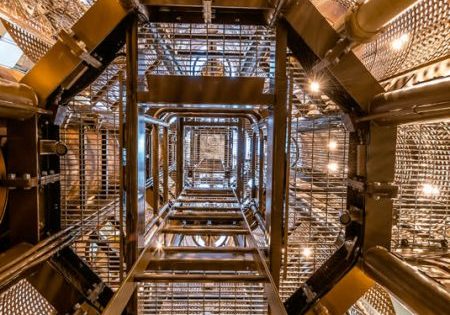Modular Maintenance Risks for Escalators
Jan 1, 2020

One of the frequent maintenance methods for escalators includes modular maintenance, which is the maintenance of its inner parts in certain intervals — generally, three months. Although this type of maintenance saves time, labor and costs, it also brings some problems. Maintenance of escalators and moving walks is carried out through adjustment, cleaning, lubrication and controls to ensure safe and functional operation of the units.
However, inspection of various components with intervals up to several months increases the accident and failure risks and decreases the lifetime of the components. For example, the maintenance of the handrail guide rollers, handrail drum thrust rollers and handrail drive chain components should be adjusted in line with the usage frequency of the unit. Maladjustment of these units makes the handrail too tight or too loose. Handrails that are too tight get overheated due to excessive friction. Overheated handrails shorten because of the properties of the handrail material. Shortened handrails cause more friction, creating a vicious cycle that will significantly decrease the handrail’s lifetime. Handrails which are too loose cause frequent stops due to the force applied by the users, and the steps move slower, which can lead to a serious safety flaw. Therefore, the units should undergo maintenances at different frequencies due to the positions and the terms of use of the units.
Another component that should undergo maintenance at variable frequencies is the step chains. Maintenance personnel often want to control the stretching of the chains by measuring the distance between the steps during their service visits. However, the stretching of the chains is only one of the risks. In order to determine the reasons behind asymmetrical stretching of the chains, the links of the chain at the related places should be checked. Otherwise, safety risks will increase as the lifetime of the components decreases. In the end, operation managers will have to cover unwanted costs. Another important maintenance requirement is the lubrication of the step chains. The most frequently encountered problem with escalators in high-traffic locations is the inability to lubricate the step chains. Although automatic lubrication is applied to the chains in certain intervals, dust and debris coming off shoes and from the outer environment can cover the chains, especially at the joints of the links. As it combines with the grease on the chain, the dust can harden, and restricting the flow of the grease through the chain pins. Unlubricated chains stretch, and, based on the speed of stretching, steps are opened more frequently than the standard maintenance intervals, creating a safety risk. Therefore, it is necessary to open the steps at intervals determined according to the traffic of the unit and to physically clean the chains from solidified grease and dust, which is not done in standard modular maintenance activities.
The step rail is another component that undergoes maintenance at long intervals. If the steps used in high-traffic places are not cleaned at sufficient intervals, grease and dust on the step rails hardens, and small lumps form on the rails. When the step rollers sweep over these lumps, they become stuck and unstuck between the lower and upper parts of the rail, which creates excessive stress on the reel feet of the steps. Any fractional opening on a step leads to fractions on the following steps, creating the danger of passengers being injured if their feet get stuck. Although it requires a simple and basic maintenance, such cases have seen in our country in the past due to opening of steps with the gaps between becoming larger.
Similarly, we may experience risks due to stretching of drive chains. New escalator models have safety contacts that monitor the stretching of the motor drive chain and become activated under dangerous conditions. However, the units that were installed before 2010 do not have such a safety component. Stretching of the drive chain can result in motor movement not being transmitted to the steps, or making a sudden transmission. As a result of such stoppages or instant movements of the steps, passengers may lose their balance and fall (especially if they are not holding the handrail).
Consequently, universal modular maintenance content brings various security and operational risks. For providing continuous functionality and secure operation, the units should undergo maintenance that is analyzed according to the terms of use of the units.
Get more of Elevator World. Sign up for our free e-newsletter.





